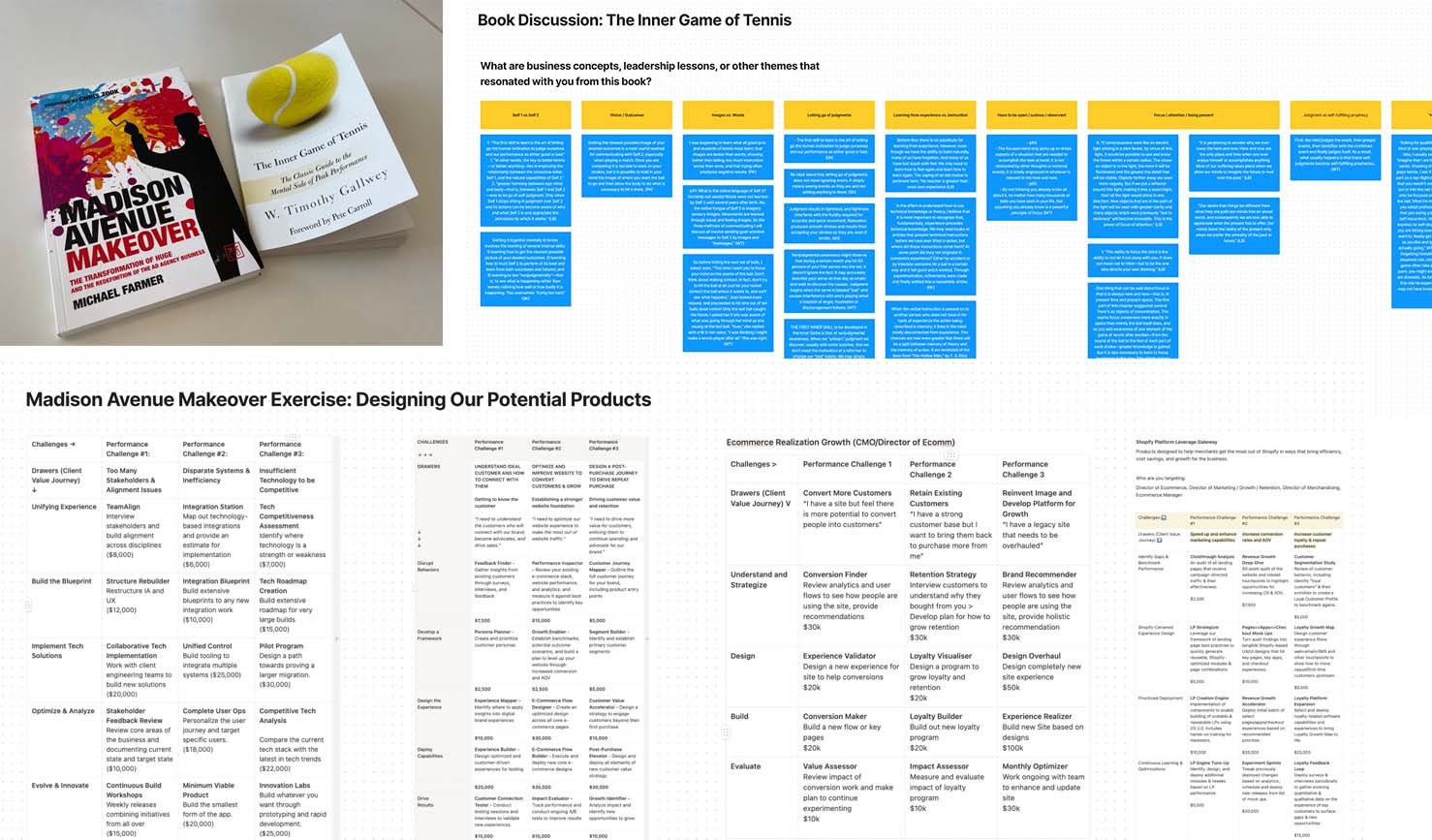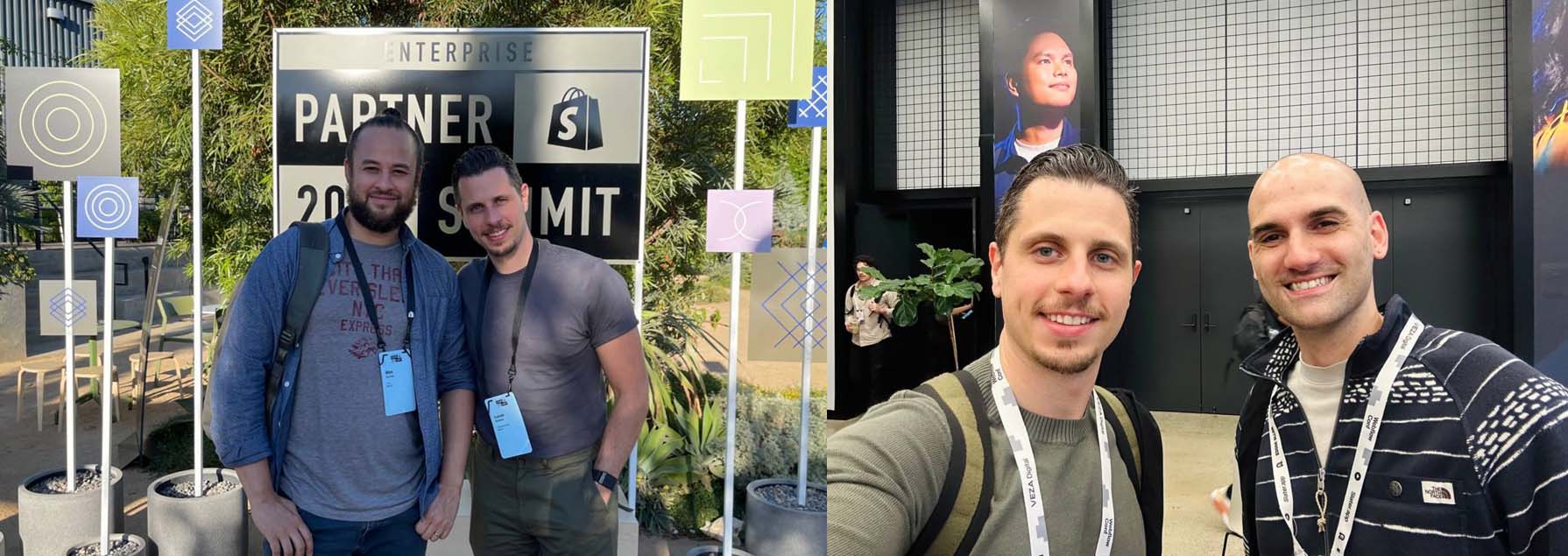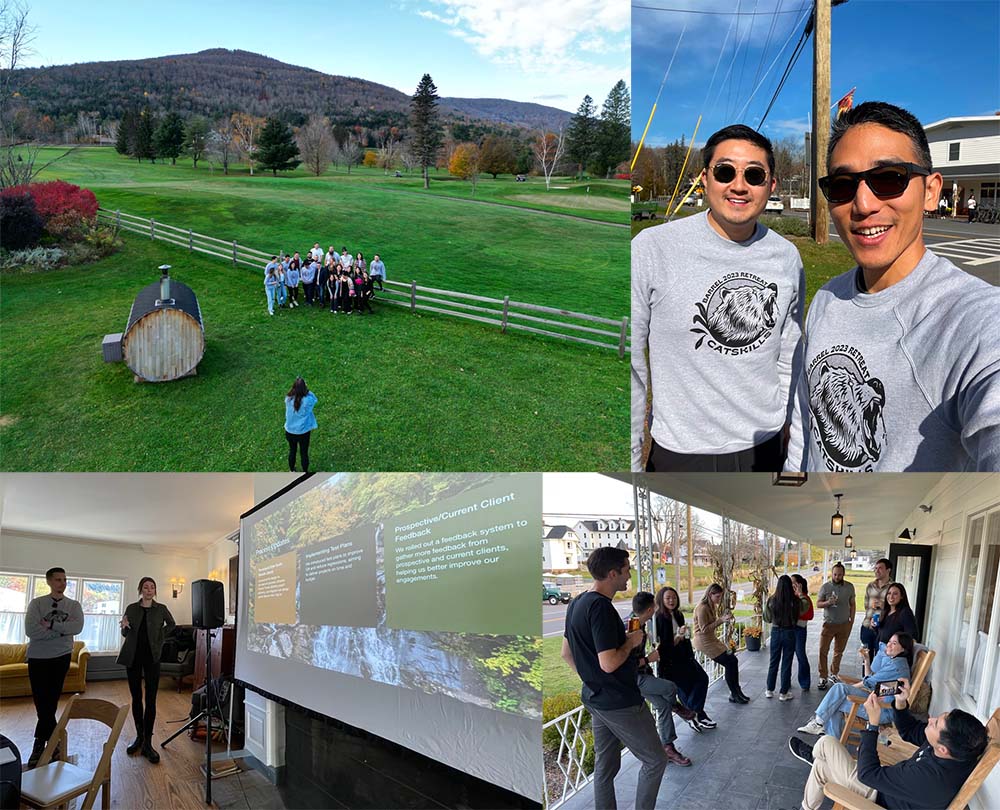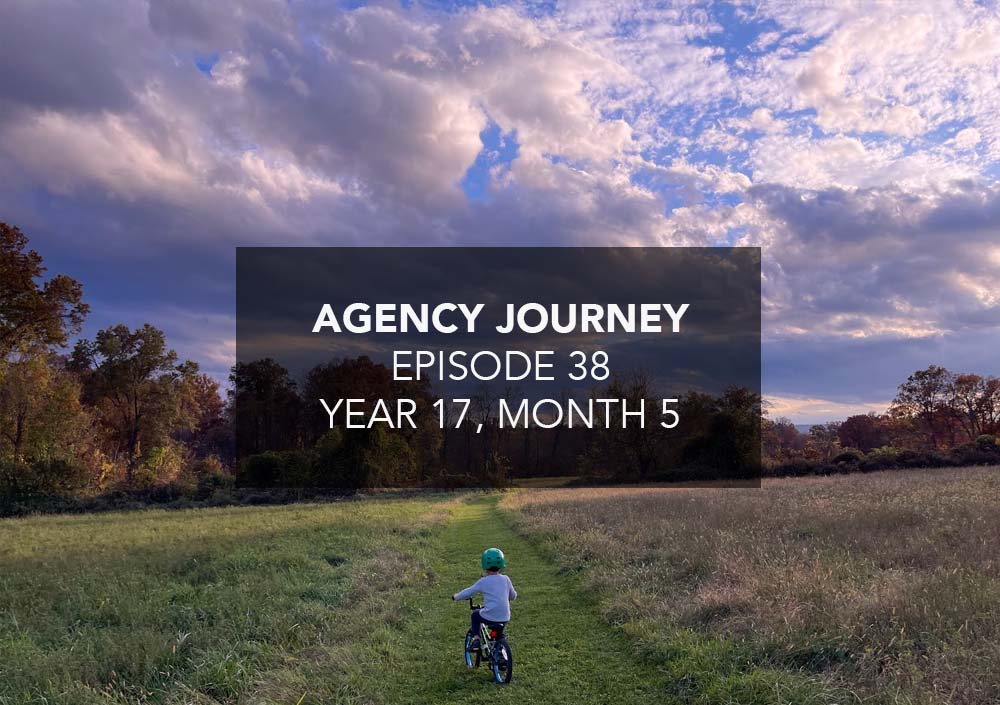October’s been an action-packed month. Every week has felt like a full-on sprint. Thankfully, my energy level and health has held up, and overall, I’m feeling calm and optimistic. With just a couple months to go in 2023, I’m feeling immensely grateful. There were lots of challenges this year and many things didn’t go our way. However, we also learned a lot, made important improvements, and didn’t get discouraged.
I don’t really have expectations for how the rest of this year will play out or how we’ll fare in 2024 in terms of revenue and profits. What I do have expectations for is that we’ll continue doubling down on delivering for our clients, building up our network through proactive outreach, and innovating on ways we can better serve new and existing clients. The inputs are what we can control, and I firmly believe in minding only that which we can control.
About Agency Journey: This is a monthly series detailing the happenings at my agency Barrel, founded in 2006. You can find previous episodes here.
Highlights
Partner Book Club & Barrel Holdings Meeting
The Barrel Partners met to discuss two books from the past quarter: The Inner Game of Tennis: The Classic Guide to the Mental Side of Peak Performance by W. Timothy Gallwey and Madison Avenue Makeover: The transformation of Huge and the Redefinition of the Ad Agency Business by Michael Farmer.

We had a productive session discussing our two readings for the quarter. The Inner Game yielded so many great takeaways and lessons. We also tried our hand at a business model exercise (turning our offerings into products) inspired by the story in Madison Avenue Makeover.
The Inner Game of Tennis sparked conversations on the process of learning and the ways in which our ego-mind and self-judgment get in the way of allowing our bodies and instincts to take over. We took lessons from the book and talked about its applications at work, in parenting, and in picking up other skills in life.
Madison Avenue Makeover prompted us to try our hand at the exercise that Huge went through in the book with consultants from The Business Model Company. We each came prepared with our own version of “gateway/doors” along with “challenges” and “drawers” – all terms from the book that were part of building a matrix of “product” offerings that an agency can offer to its clients. Our own examples, predictably, centered primarily on e-commerce and Shopify. While this exercise was intended primarily to get us thinking through a different perspective, there were certainly some compelling ideas that we’ll probably end up pursuing and experimenting as real offerings to our clients.
Later that same day, our Barrel Holdings leaders came together to share and discuss the previous quarter’s results and the outlook for Q4. Vaulted Oak and BX Studio reported sizable revenue gains for the quarter. Bolster, looking to reach breakeven, reported on its progress with the Omakase campaign. We talked at length about finding ways to grow existing client accounts and also reaching out to past clients and prospects.

Leaders from Barrel, Vaulted Oak, Bolster, and BX Studio in attendance for the Barrel Holdings meeting. Right, a revenue chart showing the breakdown among the companies.
One thing we’ll have to keep close eyes on is gross margin across all of our companies. Whether through spurts of growth, which can lead of a surge in expenses to keep up with the work, or through sudden reduction in revenue from client churn, which can lead to under-utilization, gross margin can quickly erode if we’re not continually vigilant. Revenue gains for our companies were nice to see, but the decrease in gross margin was definitely a flag and something we’ll continue monitor during Q4.
Attending Conferences: Shopify Partner Summit, Webflow Conference, and ChargeUp
In October, Barrel partners Lucas Ballasy and Wes Turner represented Barrel at Shopify’s Partner Summit in Los Angeles; Lucas and I then hit up Webflow Conference in NYC; Lucas then attended Recharge’s ChargeUp event.

Left, Wes and Lucas at Shopify Partner Summit. Right, Lucas at Webflow Conf where we met up with former Barrel designer Nick Kramer. Nick was a big reason we became early adopters of Webflow.
We’ve gone to more conferences in 2023 than probably any other year in Barrel’s history. Attending these events aren’t easy, especially as parents of young children. But we believe that there’s upside to building relationships with people at these events, getting to hang out with them in-person and understanding how we can best help each other. It’s tough to calculate a precise ROI from these right after the fact, but over a long enough period of time, the results bear out in the form of business referrals, talent intros, and support on client engagements. It may take years to materialize, but every event is a seed sown for future harvest.
Barrel Retreat 2023
This year’s team retreat took place in Wyndham, New York at a resort called Wylder, nestled in Catskill Mountains. Things went incredibly smoothly, all thanks to the efforts of our Team Experience Coordinator Allison Hilario who made sure no detail went overlooked in planning this event.

Beautiful weather, engaging sessions, cool swag, and lots of fun activities with the team – the Barrel retreat in the Catskills was a wonderful time.
In addition to perfect outdoor weather for the three days, we had a couple of very productive sessions led by performance psychologist Alex Auerbach, who shared with us some activities that he’s done previously with pro athletes (he works for the Toronto Raptors).
The first session was about defining our “Personal User Manual” based on results from the PrinciplesYou personality assessment. We took time writing about what we agreed and disagreed with the assessment along with thoughts on how we best deal with feedback and what TV or movie characters best reflect our personalities. Each team member shared their personality type along with what we each wrote down. What we found was that, as a team, Barrel has a very diverse range of personality types. It was really fun to hear everyone relate to these assessments and what it says about their work styles.
The second session was described as a “30 for 30” documentary of your own life story shared as 3 important moments that shaped our respective lives. We were encouraged to draw these moments using watercolor paintings. Each person then went up to share their moments and also to ponder “how the story ends”. What followed were some really incredible moments of vulnerability, warmth, and wisdom. We came away getting to know each other much more deeply not only as co-workers but as human beings.
We purposely kept this year’s retreat very light on work-related topics and instead maximized the time for people to hang out with each other. I think the pace was just right with enough stimulation to keep people engaged while not tiring them out. Last year’s retreat took place in New York City and was a totally different vibe. I think I prefer having an enclosed location with food, lodging, and entertainment all fairly contained in a single location.
Lots of New Biz Activity But Long Sales Cycles
A company that first reached out in December 2022 finally agreed to move forward with a project in October 2023. We still have some contract language to iron out, so it’ll most likely be mid-November before we start the project.
We have 2 more deals that are still active after 5+ months and a couple more that are approach nearly 3 months. This is in addition to a handful that, after 3+ months of back and forth, decided to put things on hold and punt discussions to early 2024. We used to average around 8 weeks for most deals to go from initial conversations to some kind of definitive decision (yes/no/revisit later). These days, we think 12 weeks is more realistic. Basically, if we start talking to someone today, more likely than not, we should project any wins to materialize in the next quarter, not the current one.
There are some deals that do move fast (we’re about to close a prospect in less than 2 weeks since initial call), but these are increasingly rare for us. What this means overall is that we need to continue being fast and flexible for our existing clients. New add-on projects or change orders with existing clients, especially sub-$25,000 in budget, typically take under a month to sign, and have been an important part of our revenue base this year.
We have a fairly active pipeline (I saw 19 deals being actively pursued as of this past Friday) which I take as a positive sign that people are looking to spend on Shopify web services. Using our year-to-date win rate of around 34%, this means we can expect to win about 6 of these deals. Of course, what’ll really matter is which of these we win (big vs. small deals – our $-based win rate is lower at around 27%) and which of these new clients will have the potential to become a Larger Account (check out the last episode, where I talk about our business model and different types of accounts).
Top of Mind
Overcoming the Fear of Rejection & What That Enables
One of the lessons that stuck out to me from the book The Referral Code by Larry Pinci and Phil Glosserman is that our fear of rejection limits us from acting in our best interests. In the book, the protagonist Jen talks about how being rejected by a boy when she asked him to the school dance ingrained in her a deep fear of rejection. This carried over to her reluctance in asking clients for referrals due to her fear that they might reject her.
I got to thinking quite a bit about my own fears around rejection in both personal and professional situations. I could recall dozens of moments where I passed up on doing something – asking for an introduction or help, reaching out to connect, striking up a convo with a stranger, sharing my POV, or applying to a program/event – precisely because I feared that I’d somehow be rejected. Perhaps people might think I was presumptuous, clueless, or unqualified. Maybe they might blow me off or ignore me. I would tell myself that I needed to “work harder and be more prepared” for the right moment, whenever that might be.
In a more Barrel-specific sense, my fears have limited me from building out a stronger network, enlisting top clients to be active referrers, getting more mentorship and advice from business leaders, going after certain types of talent, and countless other shortcomings that have stunted the growth of both myself and the business.
But, as they say, better late than never.
I’ve become more sensitive and aware of when my fear of rejection pops up. It’s a subtle but powerful resistance that I can spot more and more quickly these days. And when I do, I tell myself that the fear is really unfounded. Losing deals, being ignored, getting requests denied – these are just signals in response to specific attempts and in no way an indictment of who I am as a person. The Referral Code cites an Eleanor Roosevelt quote that I found helpful to repeat: “No one can make you feel inferior without your consent.”
On a very logical level, I think there is asymmetry in going for it vs. not going for it due to the fear of rejection. When it’s time to do something a bit uncomfortable, I ask myself to imagine the upside reward vs. the downside risk. In the vast majority of situations, the upside is so great and the downside is quite negligible. In fact, the downside of not doing anything at all is actually much worse in most situations – it’s usually a recipe for regrets and what ifs.
Here’ s a mundane yet relevant example that happened recently: reaching out to a college acquaintance who’s become a CEO of a well-known consumer brand to ask for an intro on behalf of another friend. In the past, I would’ve feared the rejection too much to even try, but this time, I weighed my upside vs. downside and went for it. I immediately shot a note via LinkedIn and when that was ignored, I sent an email. After a couple of follow-ups, I ended up getting a response. While the CEO was non-committal in wanting to connect with the friend, the gesture was appreciated by the friend, who subsequently introduced me to someone who might be interested in our agency services.
I love thinking about the overcoming of the fear of rejection, or of failure in general as a kind of superpower that is available to all of us. The more we can build this muscle, especially early on in our lives, the more we can unlock opportunities to grow, have new experiences, and connect with people we otherwise may never have gotten to know. This sort of fearlessness is something I will model for my kids so that they can realize that life offers so much more when you take more shots on goal.
Shared with Partners
“An outer scorecard, which many people have, asks, “What will people think of me? Will they judge me by the way I dress or the way I look or the car I drive?” But the inner scorecard, which is much more important, asks, “Am I doing the right things? Am I treating people correctly? Is this working for me as an individual?”” (Gautam Baid, The Joys of Compounding)
One of the more liberating shifts I’ve made as an adult is to embrace and prioritize the inner scorecard over any form of external validation. Some additional questions I ask myself as part of my inner scorecard: Am I being smart and intentional about the things I’m doing? Am I learning and growing? Am I showing up for and taking care of my loved ones?
“Don’t start telling me how you can solve my problems until I have acknowledged that there’s a problem or an opportunity here. Simply asserting to me that I have problems or opportunities isn’t enough. If you say it, I can and will doubt you. If I say it, it’s true. The key talent in good selling is being good at getting me, the client, to reveal my problems, needs, wants, and concerns. If I’m talking, telling you about my company and my needs, you’re ahead: if you’re talking you’re losing. Professionals talk too much. Ask good questions and listen.” (David H. Maister, Managing the Professional Service Firm)
This is critical advice for client interactions. In our line of work, there’s often a desire to jump right into problem-solving mode, using our pattern-matching skills to point out how we can help a client. In many cases, this works out fine, but when clients aren’t given the space and prompts to articulate their challenges, you run the risk of framing problems and opportunities in ways that’s not aligned with how the client sees it, in which case, it erodes the value of your solutions. “Ask good questions and listen” is the best way to build trust with clients.
“You need to have a system in place that will immediately reward the act of referring a client to you. Your rule of thumb should be to “treat the referral source even better than the referral.” Show your appreciation at every point: when you take the referral call, when you meet with the referral, when you do business with the referral, and when the transaction is complete. Too many real estate agents make the mistake of rewarding only those referrals that turn into closed transactions. Reward the right behavior!” (Gary Keller, Jay Papasan, Dave Jenks, Gary Keller, Dave Jenks, The Millionaire Real Estate Agent)
I’ve made the mistake in the past of only thanking a referrer (beyond the initial “thanks for the intro” note) if the referral led to a win. Amateur move. These days, I remind myself to thank the referrer regardless of the outcome and keep them posted on how things went with their referral.
“When you keep fear and worry locked inside your head, it brings on migraines and more fear. It affects your stomach. Your whole nervous system gets edgy. When you speak out, really step up and speak out, you are back in command of your own voice. Your own soul. It is a bold and provocative thing to do.” (Steve Chandler, The Joy of Selling)
Having a close-knit leadership team has made it feel safe to share our concerns and fears with each other on a regular basis, which has the benefit of lowering our feelings of anxiety while also emboldening us to face challenges with confidence. I can see how not having such an outlet can lead to carrying a lot of worries inside your head, which can build up to stress and burnout.
